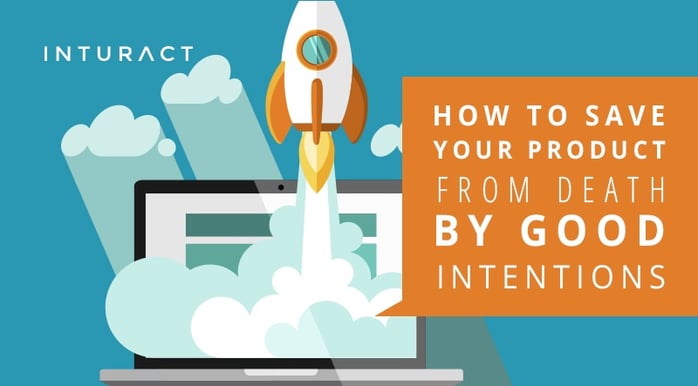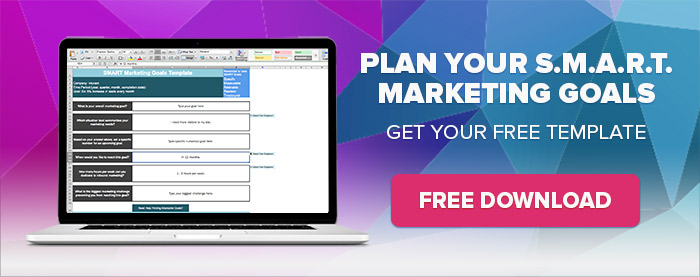
Gathering the wrong data can spell DEATH for your product. Sounds dire, doesn’t it? Just the kind of overblown shock tactic I usually do not recommend. Andrew Chen (Uber) shed some light on the Product Death Cycle, and it is very real. If your product is inexplicably dying out from under you, there’s good news: You just might be able to bring it back to life.
The cycle begins with well-intentioned entrepreneurs gathering the kind of qualitative data that is downright toxic to businesses. We’ll give you some tips on how to avoid falling into the Product Death Cycle trap, and how to claw your way back out if you already have.
The Road to Hell is Paved with Good Intentions, and Bad Data
New product launches are hard! The product isn’t quite working, but it’s so close, and you’re scrambling to fix bugs and adjust user experience to make as strong an entrance as you can into the market.
What if nobody uses it?
If you’re like most entrepreneurs (read: every entrepreneur), you start to panic. But you’ve read all about Lean Startup methodology and the importance of building a product based off of customer feedback, so you do the logical thing:
You ask your customers why they’re not using your product.
You might even ask them “what features are missing?” or “what could we add to make this product more appealing?”
Then, you do the next logical thing: You build those features.
All of a sudden, a black hole opens up beneath your business and sucks you down into the Bizarro-underworld of the Product Death Cycle.
Experienced product and service developers have seen this cycle happen again and again. It’s a trap that’s easy to fall into because it seems so logical, so right, so responsive to customer’s needs. So let’s break down exactly why logic doesn’t work here (okay, logic does work, but not this logic).
How the Product Death Cycle Works
1. You launch your product to an empty room – no one is using it
This is scary. Panic-inducing, even. But it’s not the part that gets you into real trouble. Your product is brand new – of course no one is using it yet! The problems arise when you react to this the wrong way.
2. You ask customers what features are missing / what features they wish it had / their wish list etc.
Asking a customer what features they wish they had is like asking them to do your work for you – you can’t expect the layman to design his own solutions, that’s your job! What tends to happen is that the users who love your product most (your mom) may not actually represent your target audience (everyone who is not your mom), which makes their feedback less than helpful. Another pitfall is that most people are not creative geniuses. If pressed for a solution to a problem, they’re going to try to reinvent the wheel (ie. use an existing idea instead of coming up with a new, better one).
And, the final nail in the coffin of your product is that the “What features are missing?” question assumes that the problem with your product is a lack of features, when it could be (and probably is) something else entirely. Your price point could be wrong, your product/market or problem/solution fit could be wrong, your marketing could be wrong, or maybe your CTA button is broken. When you spend all of your time and resources adding features, you may miss the larger problems.
3. Then you build the missing features. Oh honey, no.
You take your customers’ wish lists and somehow, you manage to create exactly the features for which they’ve been clamoring. Weeks later, you’re still wondering why they’re not flocking to your site. Uh oh – you’ve fallen victim to the Next Feature Fallacy (just one more feature will make everything great!). It’s another, relatively logical, assumption – right?
The Next Feature Fallacy is the close relation of the Product Death Cycle and tends to come into play when a subscription-based product sees a steep drop-off in use, which usually happens within the first few weeks. In an attempt to retain clients, you build a shiny new feature. But, the vast majority of new features don’t help retain clients – they’re not even used very much. Features aren’t the problem and they are rarely, if ever, the answer.
The most interaction with a product happens with the first few visits, which means that if you don’t have a stellar onboarding process that makes your product easy to understand and use, and delivers intrinsic and immediate value, you’ll see massive amounts of churn. No new feature is going to fix that.
How to Avoid the Black Hole of Feature Frenzy
The real danger of the Product Death Cycle is that it distracts you from asking the questions that will improve your product and business. The central question you should be asking isn’t “What?” but “Why?” ![]()
- Why aren’t customers flocking to your site?
- Why aren’t customers converting on your landing page?
- Why aren’t customers sticking around longer than three use periods?
Fun fact: A number of companies have come up with why-based systems to explore cause-and-effect relationships, one of which is the “5 Whys.” The idea is that it takes asking “Why?” 5 times to reach the root cause of a problem, though your results may vary.
Using the 5 Whys to Get to the Root Cause of Your Acquisition or Retention Problem
The 5 Whys is a more sophisticated version of what you probably did to your parents as a child on long road trips: Asking “Why? Why? Why? Why? Why?” until they ran out of answers, found the meaning of life, or threatened to pull over to the side of the road and let you walk. It’s like that, but formalized.
- First, write down the specific problem you’re having. Describe it in detail. This will help you focus on one issue, when a number of other issues may be raised before you’re done with the exercise.
- Second, ask several very helpful customers why this problem happens.
- Third, continue asking “Why” to each response until you reach the bottom of the well - which may take more than 5 whys or fewer.
In practice, this looks like:
Problem: You built the site, but you have very little traffic.
Why do you have so little traffic? Because your target audience isn’t finding you.
Why isn’t your target audience finding you? Because you totally forgot to add in meta tags and your on-site SEO is non-existent.
See, that only took two whys. Let’s try again.
Problem: Customers aren’t converting on your landing page. They show up, look around, and leave.
Why are customers leaving without converting? They’re not finding what they want.
Why are they not finding what they want? Because the ad, or CTA, or SERP blurb made it seem like they were getting one piece of information, when in fact your landing page doesn’t offer that information.
Clearly, you need to make sure your ads, CTAs, and meta data are consistent with what is actually on the landing page.
By making your problem as specific as possible, using all the data at your disposal, you’ll be able to come up with better questions and better answers. For example, if customers come to your landing page and your heatmap shows that their mouses are hovering over the Buy button, but purchases aren’t happening, that tells you your button might be broken, or the wording is scaring people away.
However many “why”s it takes, find the root cause and then tailor your solution around it. You’re still listening to customers and asking for their input, but only your experience and expertise can deliver the solutions they may not even know they need.
If talking to customers isn’t possible, you can also gain insights by installing exit surveys onto key pages. These surveys only pop up once a user is clicking off of your page, making them very useful for finding out why conversions aren’t happening. Keep it short, include some yes or no questions if you need to, but always include open-ended questions as well so you can find out:
- What turned them off
- What didn’t work
- What confused them
Or whatever other problem you think might stand in the way of conversion.
Your goal is to improve their user experience, streamline their sales journeys, and remove any and every obstacle (within reason) between them and their ideal outcomes. But, you can only do so when you understand the user experience from the customer’s perspective.
It All Comes Back to Customer Development and Customer Success in the End
What we’ve been talking about here is, essentially, customer development. Customer development means talking to people to find out the motivations behind their actions - the “Why?” behind the “What.” From that foundation, it becomes possible to validate your product and create a powerful value proposition, and approach every other customer-facing decision from an informed place.
Who is my audience?
Why are they here?
What are they trying to accomplish?
These are the questions that count, and their answers will guide you to developing a product that has market fit, and the marketing strategy that will ensure your customer’s success - and your own.
At some point, you will have to build a new feature for your product to ensure continued growth. But let your decision be guided more by what customers need to be successful, rather than by what they say they think they want.



